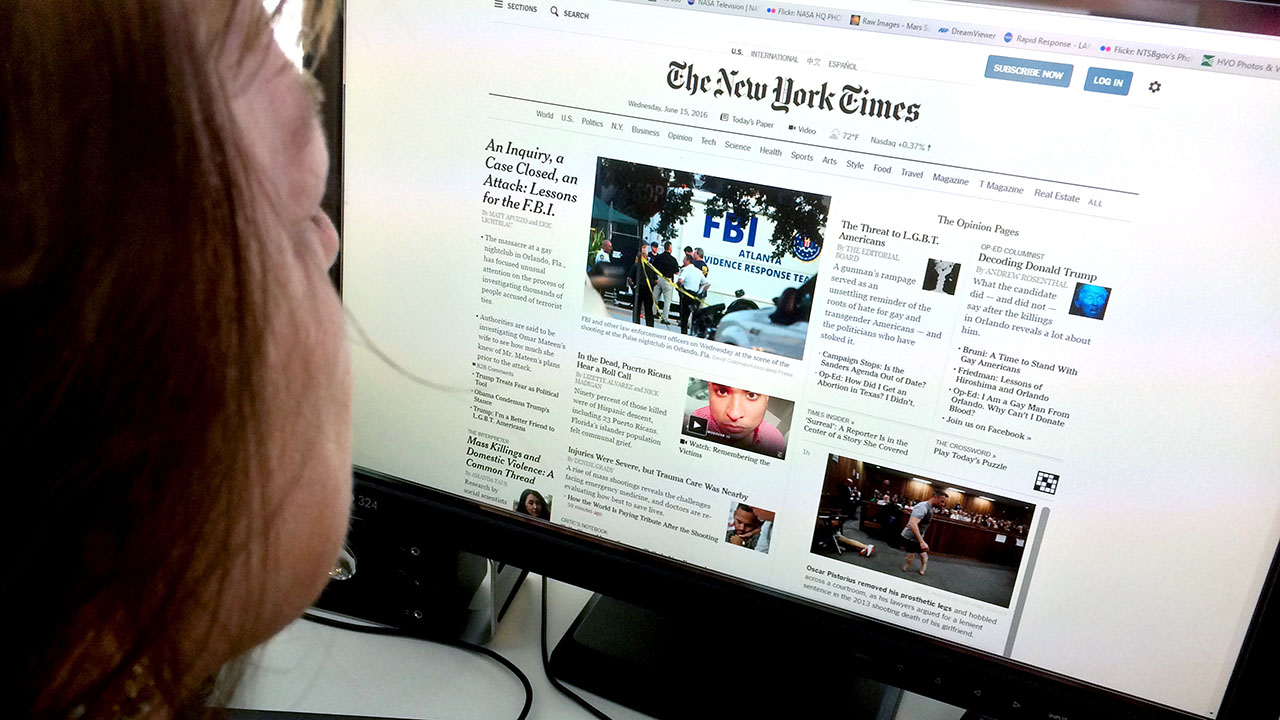The Evolution of Journalism in the Age of Information Online
In the swiftly transforming landscape of journalism, the digital age has actually ushered in a brand-new era where the immediacy of on-line news improves both its creation and consumption. As digital platforms multiply, they improve interactivity and broaden the reach of journalism, yet simultaneously test traditional norms with the speedy spread of information and false information alike. The rise of resident reporters and independent voices even more makes complex the story, adding to a vivid yet precarious media ecological community. As we browse these intricacies, one must question about the future of journalistic honesty and exactly how it can be protected in the middle of these transformative changes.

Rise of Digital News Operatings Systems
The rise of digital news systems has basically transformed the landscape of journalism, marking a shift from traditional print media to dynamic, on-line spaces. This advancement was driven by advancements in innovation and the raising ease of access of the web, which permitted news to be distributed swiftly and broadly. Unlike their print counterparts, digital systems can immediately upgrade web content, providing real-time news protection and evaluation that interest the modern reader's demand for immediacy and importance.
Digital systems have likewise broadened the extent of journalism, making it possible for a diversification of point of views and voices. With reduced obstacles to access, independent journalists and smaller sized information organizations can reach worldwide audiences, challenging the monopoly when held by established media corporations. This democratization of news has enriched the public discourse, providing varied narratives and accommodating niche interests that were previously underserved.
Moreover, the integration of multimedia components such as video clip, sound, and interactive graphics improves narration, making news much more easily accessible and interesting (dw news). This multimedia come close to not just attracts a broader audience but likewise aids in the comprehension of complicated stories. Basically, electronic systems have actually redefined journalism, fostering innovation and flexibility in an ever-evolving media atmosphere

Influence of Social Media
Social media platforms have further revolutionized journalism by modifying how information is taken in and shared. In addition, social media has actually increased audiences, providing reporters access to global viewership past geographical restrictions.

The interactive nature of social networks promotes interaction, allowing target markets to take part in discussions, share point of views, and add to information narratives. This interaction improves the dynamic in between journalists and their audiences, advertising a more participatory kind of journalism. Nevertheless, this also puts immense stress on journalists to generate material that resonates with target markets, commonly prioritizing sensationalism to catch attention.
Additionally, social media systems have become crucial devices for reporters to resource stories, evaluate public viewpoint, and network with market peers. The dependence on social media additionally necessitates a vital examination of resources to make certain the reliability of info shared.
Difficulties of False Information
Among the electronic revolution of journalism, one significant challenge is the prevalent spread of misinformation. In an era where information is swiftly accessible and bountiful, distinguishing in between reliable news and fabricated content has become increasingly difficult. The large quantity of details distributed across various on the internet systems often obscures the line in between truth and fiction, positioning a considerable risk to the integrity of journalism.
False information can spread out quickly through social media, where formulas focus on interaction over accuracy, accidentally intensifying incorrect narratives (dw news). This not just threatens public rely on media institutions yet likewise cultivates a setting where misleading content visit this site can affect popular opinion and decision-making processes. The obstacle for reporters is twofold: to expose frauds effectively and to copyright strenuous requirements of fact-checking and verification
More complicating this problem is the presence of deepfakes and innovative disinformation campaigns that utilize advanced modern technologies to produce deceptive material indistinguishable from legit reporting. As these innovations advance, so should the devices and techniques used by journalists to fight them. Addressing false information calls for partnership in between media companies, innovation firms, and policymakers to develop the original source detailed strategies that protect the credibility of information in the digital age.
Function of Person Journalists
Navigating the landscape of false information highlights the transformative impact of citizen journalists within the electronic realm. As conventional media electrical outlets face the sheer speed and volume of news dissemination online, resident journalists-- regular individuals armed with smart devices and accessibility to social media sites-- are playing a significantly crucial function. These grassroots factors have actually become crucial in covering occasions swiftly, commonly giving real-time updates from the ground prior to mainstream media can react.
Person reporters have actually equalized news coverage, intensifying voices that might otherwise stay unheard. By leveraging platforms like Twitter, Facebook, and Instagram, they use varied viewpoints that challenge the stories regularly pushed by developed media.
However, citizen journalism is reshaping the media landscape, compelling conventional electrical outlets to adjust by integrating user-generated material right into their coverage. By fostering neighborhood engagement and encouraging participatory journalism, these digital storytellers add to a much more vibrant and inclusive information community. As person journalists remain to evolve, their role in forming public discourse continues to be a necessary element of contemporary journalism.

Future of Journalistic Stability
The expansion of digital systems has equalized info dissemination, making it possible for a broader range of voices to add to the information landscape. This has likewise led to the spread of misinformation and the disintegration of trust fund in media.
The increase of expert system and algorithm-driven material curation even more complicates the landscape. While AI can enhance reporting by assessing huge datasets and determining patterns, it try this also poses risks of prejudice and manipulation. Journalists have to for that reason remain attentive, making sure that technology acts as a device for truth instead than distortion.
Moreover, the economic stress on traditional media outlets require ingenious service models to maintain quality journalism. Subscription-based versions, nonprofit funding, and partnerships with tech companies are arising as potential solutions. Yet, they have to be pursued without endangering content freedom.
Eventually, the future of journalistic stability relies on the commitment of media and reporters organizations to copyright openness, accountability, and an unfaltering dedication to truth, amidst a swiftly changing digital globe.
Final Thought
The evolution of journalism in the electronic age provides both challenges and opportunities. The surge of digital news systems and social media has equalized information circulation, empowering a diverse range of voices, including citizen reporters. Nonetheless, these advancements demand watchful initiatives to fight false information and copyright journalistic honesty. The future of journalism rests on the ability to adapt innovative service versions that maintain quality reporting while keeping the credibility and depend on crucial for informed public discourse.
The increase of digital news systems has fundamentally transformed the landscape of journalism, marking a shift from standard print media to vibrant, on-line spaces. With lower barriers to entrance, independent journalists and smaller news organizations can reach worldwide target markets, challenging the syndicate as soon as held by established media corporations.Social media platforms have even more transformed journalism by modifying just how news is consumed and shared. As traditional media electrical outlets grapple with the large speed and volume of information dissemination online, person journalists-- average people armed with mobile phones and access to social media-- are playing an increasingly pivotal duty. The surge of electronic information systems and social media has equalized info circulation, encouraging a diverse variety of voices, including resident journalists.